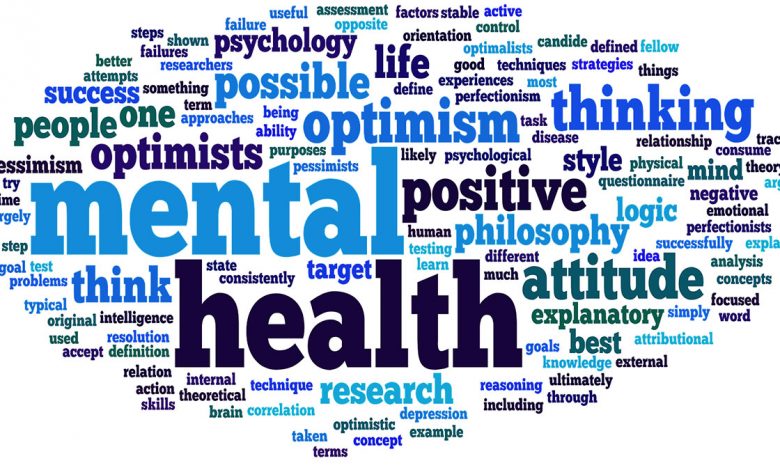WEJULI MIKE: The role of urban spaces in mental health and general public health
This article explores how the design, availability, and quality of urban spaces can profoundly influence the mental health and overall health of urban dwellers.

Urbanization has been a defining trend of the modern era, with over half of the world’s population now residing in urban areas. Cities are centres of economic activity, cultural exchange, and technological innovation.
However, the rapid and often unplanned expansion of urban areas has led to significant challenges, particularly concerning public health. One critical aspect of this is the impact of urban spaces on mental health and general well-being. This article explores how the design, availability, and quality of urban spaces can profoundly influence the mental health and overall health of urban dwellers.
The connection between urban spaces and mental health
Stress and overcrowding
Urban environments are often characterized by high population density, which can lead to overcrowding and increased stress levels. The constant noise, pollution, and lack of personal space can contribute to chronic stress, which is a significant risk factor for mental health disorders such as anxiety and depression. Studies have shown that individuals living in densely populated urban areas have a higher prevalence of mental health issues compared to those in rural settings.
Green spaces and mental health
Green spaces in urban areas, such as parks, gardens, and nature reserves, play a crucial role in mitigating the negative effects of urban living. These spaces provide a sanctuary for relaxation and recreation, offering a respite from the hustle and bustle of city life. Research has demonstrated that access to green spaces is associated with reduced levels of stress, improved mood, and lower rates of mental health disorders. For instance, a study published in “Environmental Health Perspectives” found that individuals living near green spaces had significantly lower rates of depression and anxiety.
Social interaction and community cohesion
Urban spaces that facilitate social interaction can enhance community cohesion and provide a support network for individuals. Public spaces such as squares, community centres, and recreational facilities encourage social engagement, which is essential for mental well-being. Social isolation is a known risk factor for mental health problems, and well-designed urban spaces can help combat loneliness by fostering a sense of community
The impact of urban design on general public health
Walkability and physical activity
Urban design that promotes walkability can have a profound impact on physical health. Walkable cities encourage residents to engage in physical activity, which is essential for maintaining a healthy weight, reducing the risk of chronic diseases such as heart disease and diabetes, and improving overall fitness. Features such as sidewalks, pedestrian crossings, bike lanes, and public transit accessibility all contribute to a more walkable environment.
Air quality and pollution
Air quality is a major concern in urban areas, where pollution levels are often higher due to traffic, industrial activity, and energy consumption. Poor air quality can lead to respiratory problems, cardiovascular diseases, and other health issues. Urban planning that incorporates green spaces, reduces vehicular traffic, and promotes the use of public transportation can help improve air quality and reduce the incidence of pollution-related health problems.
Access to healthcare and essential services
Proximity to healthcare facilities and essential services such as grocery stores, schools, and recreational centers is a critical factor in public health. Urban areas with well-distributed services ensure that residents have easy access to healthcare, nutritious food, education, and recreational activities. This accessibility can lead to better health outcomes and reduce health disparities within the urban population.
Challenges and solutions in urban planning
Inequitable distribution of resources
One of the significant challenges in urban planning is the inequitable distribution of resources. Low-income neighbourhoods often lack access to quality green spaces, healthcare, and essential services, leading to poorer health outcomes. Addressing this requires a concerted effort from policymakers, urban planners, and community organizations to ensure that all residents, regardless of socioeconomic status, have access to the resources they need for good health.
Sustainable urban development
Sustainable urban development is essential for creating healthy urban environments. This involves integrating environmental, social, and economic considerations into urban planning. Sustainable practices such as promoting energy-efficient buildings, enhancing public transportation, and preserving natural habitats can contribute to healthier urban spaces. Additionally, engaging communities in the planning process ensures that development meets the needs of residents and fosters a sense of ownership and responsibility.
Technological innovations
Technological innovations can also play a role in improving urban health. Smart city technologies, such as sensors for monitoring air quality, traffic management systems, and digital health platforms, can provide real-time data and insights to enhance urban living conditions. These technologies can help city planners make informed decisions to improve public health outcomes.
Case studies and examples
Singapore: A model of green urban planning
Singapore is often cited as a model for integrating green spaces into urban planning. The city-state has implemented numerous initiatives to enhance greenery and biodiversity, such as the “Garden City” and “City in a Garden” concepts. Parks, rooftop gardens, and vertical greenery are ubiquitous, providing residents with ample opportunities for recreation and relaxation. Studies have shown that these green spaces contribute to the high quality of life and well-being of Singapore’s residents.
Makerere University: Promoting bicycle culture
Makerere University is renowned for its bicycle-friendly infrastructure, which has made cycling a primary mode of transportation for many students currently while in campus. The campus’s extensive network of bike lanes and bike-sharing programs encourages physical activity and reduces reliance on motor vehicles, leading to lower pollution levels and improved public health. Makerere University’s approach to urban mobility demonstrates how thoughtful urban design can promote a healthier lifestyle.
Conclusion
Urban spaces play a critical role in shaping the mental and physical health of city dwellers. The design, availability, and quality of these spaces can significantly influence stress levels, social interaction, physical activity, and access to essential services. As urbanization continues to rise, urban planners and policymakers must prioritize health-promoting environments. By addressing the challenges and leveraging technological innovations, we can create urban spaces that enhance the well-being and quality of life for all residents. Investing in healthy urban spaces is not only beneficial for individuals but also for society as a whole. Healthier populations are more productive, have lower healthcare costs, and contribute to the social and economic vitality of cities. As we look to the future, the integration of health considerations into urban planning will be crucial in building sustainable, resilient, and thriving urban communities.
Wejuli Junior Mike is a Public Health Specialist







